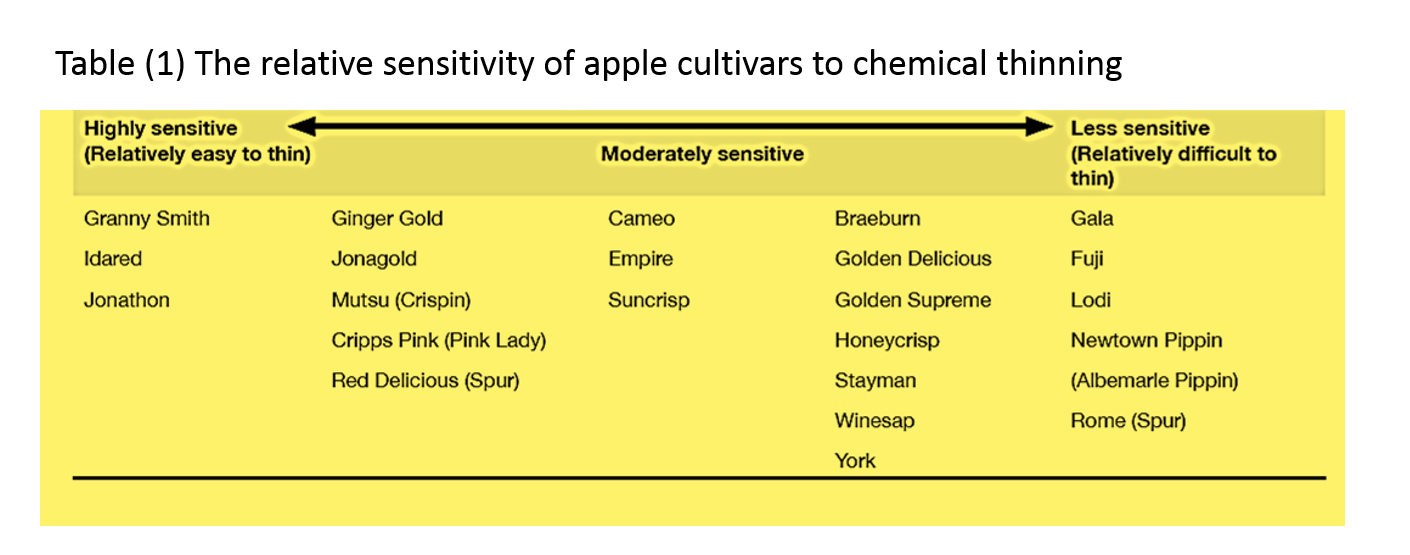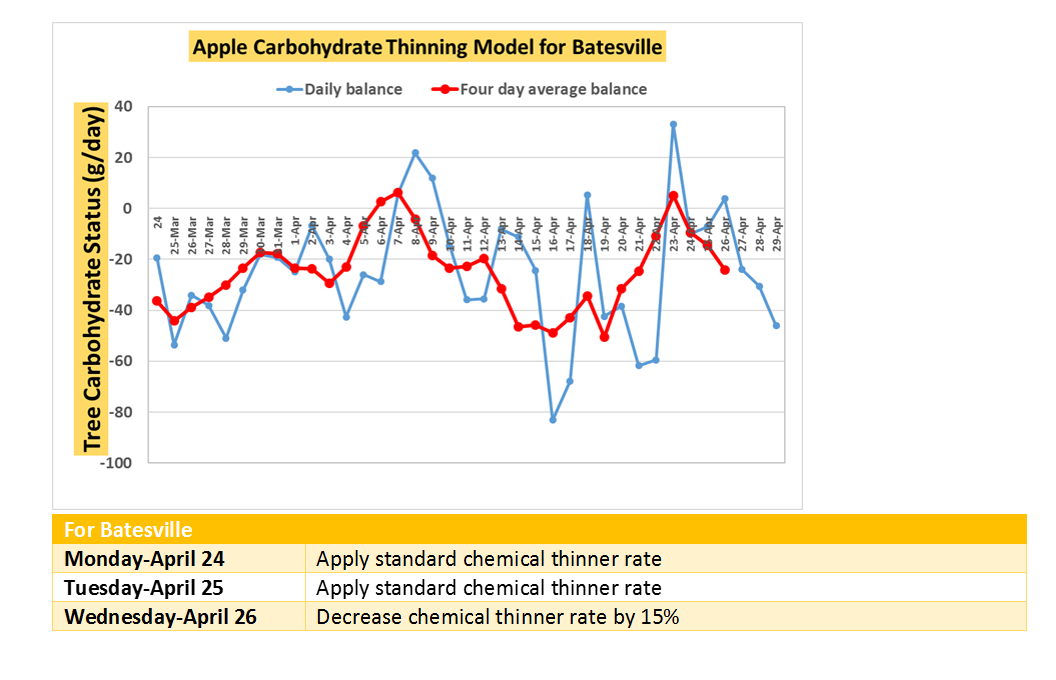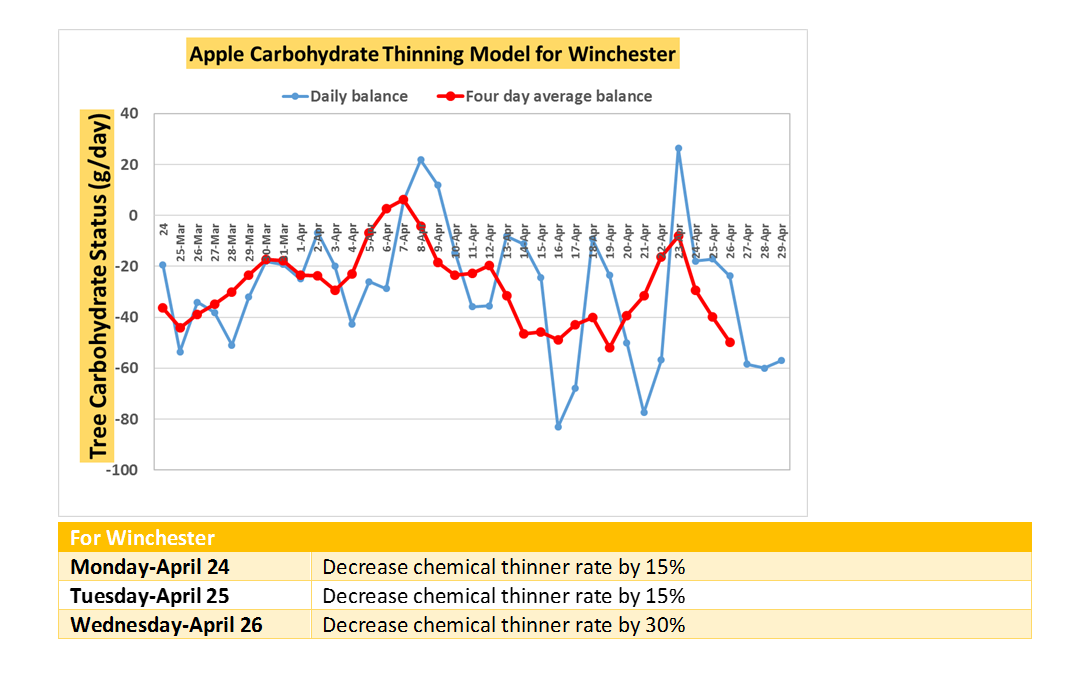Although the carbohydrate model still suggests thinning applications until Friday, I would consider any thinning application tomorrow and for the rest of this week as RISKY.
Today (April 26) is a perfect timing for thinning as you still have at least three days before the carbohydrate balance reaches to critical levels and it’s highly likely that fruitlets that will respond to today’s spray will be found on the ground in the weekend or early next week.
However, the weather forecast predicts conditions that will lead to more carbohydrate deficit this week and probably next week; and the carbohydrate model shows critical levels of carbohydrate balance (-60 to -80 g/day) this Saturday. At such low levels of carbohydrate reserve, the natural abscission of small fruitlets is highly likely. So, even if you do not apply any thinning treatments tomorrow (Thursday, April 27) or after tomorrow, some natural thinning will likely occur within and after the weekend.
The following are the recent updates of the model outputs, for Winchester and Central Virginia.


Note: I have noticed some delay between the time I post on the Horticulture blog and the time the updates can be seen by the public. I would advise that you keep this link (http://blogs.ext.vt.edu/tree-fruit-horticulture/2017/04/26/apple-carbohydrate-thinning-model-updates-for-april-23-30-2017/) in your bookmarks and go directly to the “Recent Posts” icon on the right-hand side of your screen to remain updated.












